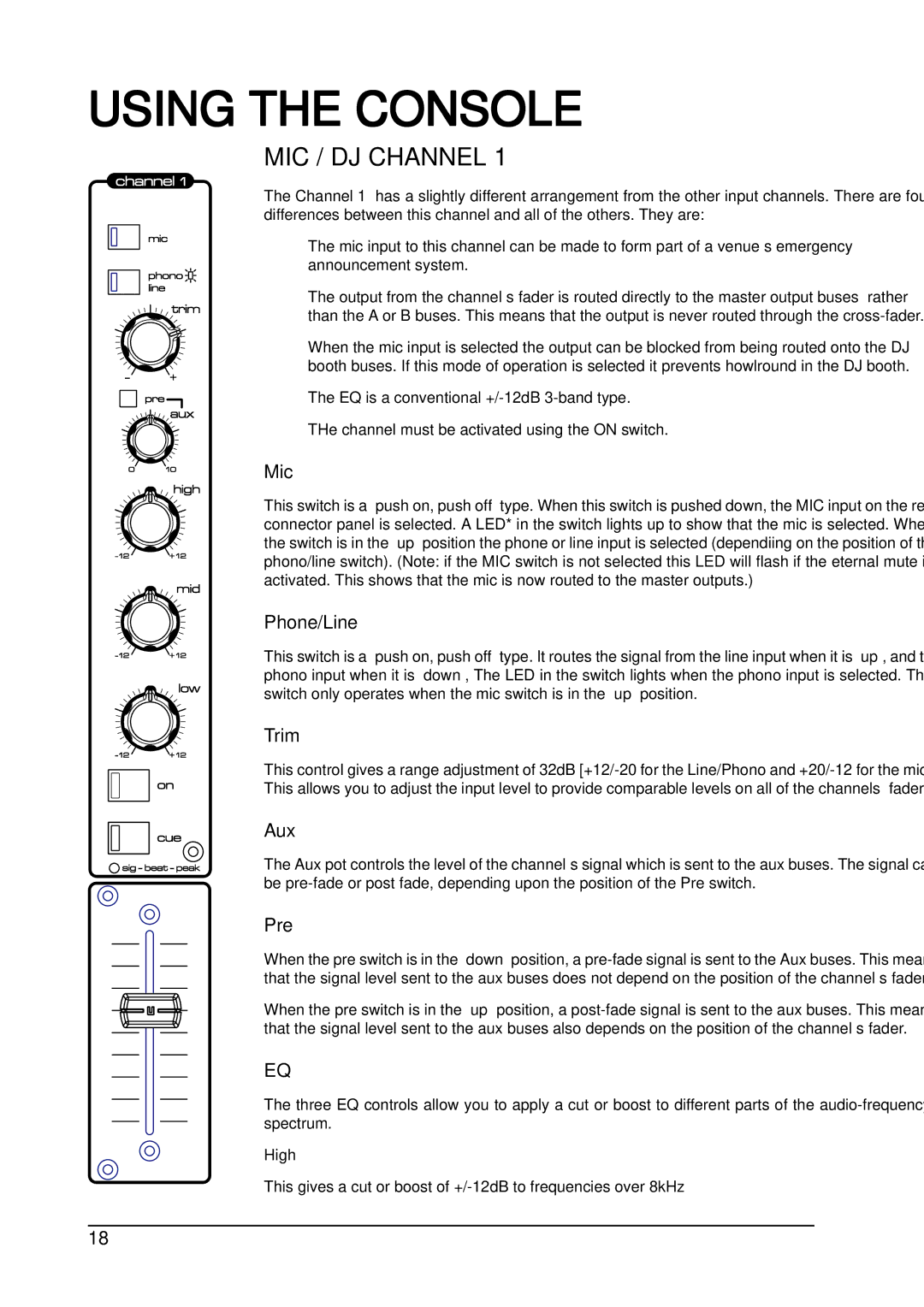1605, 1603 specifications
The SoundCraft 1603 and 1605 are renowned analog mixing consoles well-regarded in both live sound environments and studio settings. These mixers offer exceptional sound quality coupled with intuitive operation, making them a popular choice among audio engineers and musicians alike.The SoundCraft 1603 is a 16-channel mixer featuring 3 buses, while the 1605 amplifies this with 16 channels and 5 buses, providing increased routing flexibility. Each channel is equipped with a high-quality microphone preamplifier, which delivers a warm, rich sound. The preamps feature a low-cut filter that aids in eliminating unwanted low-frequency noise, further enhancing audio clarity.
Both models come with an integrated 3-band EQ on each channel, complete with adjustable high, mid, and low frequencies. This allows for precise tone shaping, enabling users to sculpt their sound to fit various musical styles and requirements. The mid-band also features a sweepable frequency, providing the ability to target specific problematic frequencies in live settings, enhancing the overall mix.
Advanced technologies implemented within these consoles include the use of internal components that reduce noise levels and improve overall audio fidelity. The mixers are designed with ruggedness in mind, ensuring they withstand the rigors of live performance while providing the reliability necessary for studio applications.
Additional features that stand out include a range of auxiliary sends, allowing for flexible routing options for effects and monitor mixes. The mixers also support phantom power, making them ideal for use with condenser microphones. The user-friendly layout ensures quick access to all controls, allowing engineers to focus on mixing without unnecessary distractions.
Another key aspect is the mixer’s compact design, making it suitable for small venues, mobile setups, and studio environments where space is a premium. The sturdy construction and high-quality components ensure longevity, a significant advantage for professionals who rely on consistency in their equipment.
In summary, the SoundCraft 1603 and 1605 mixing consoles are excellent choices for those seeking high performance in a compact and user-friendly package. Their combination of advanced features, reliability, and sound quality has established them as essential tools for anyone serious about audio production and live sound reinforcement. Whether in a studio or on stage, these mixers deliver on all fronts, ensuring an exceptional experience for both the engineer and the audience.

